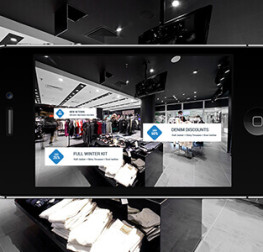Safer Skies – Does Technology Really Have an Answer To This?
Taking a flight is routine for most of us. It is quick, posh convenient and safe.
Air travel is over 60 times safer than car travel and bears 12 times less risk than taking a train. This is true when the fatalities are counted in terms of distance traveled.
According to America’s National Safety Council, a person is 180 times less likely to die in an air accident over a car crash.
If you board a plane, your chance of getting into a major mishap is only 1 in 11 million.
Yet, despite all the reassuring statistics, accidents, unfortunately, do occur. The disheartening news of Malaysian Airlines Flight 370 still haunts us.
Jittery, right?
Safety happens to be the biggest concern for both an airline and its passengers.
The industry, no doubt, goes an extra mile to make air travel safer. Today, the skies are a lot safer than a decade ago. Technology advancements have made it possible for passengers to travel without worrying much.
Unless there’s an unforeseen or strange occurrence, air travel is the way to go.
Is there a technology that can take flight safety to another level?
Well, a resounding YES.
Augmented Reality has really piqued up the curiosity of those in involved in the aviation space.
The ability of this technology to provide computer-generated information right in front of you i.e. in line of sight is being utilized to enhance flight safety.
What’s more, with wearable technology like Google Glasses and Epson Moverio, augmented reality applications can be engineered that offer flight information/data to pilots’ right in front of them.
Take-off
Take-offs can be particularly challenging especially during low visibility. Having accurate information; is, therefore, critical here. Route awareness, scanning markings, and signage maintaining speed and braking and monitoring obstacles are extremely crucial. Pilots also need to have detailed understanding of the airport surface, i.e. their present location on the runway and traffic too. It is important for navigation and maneuvering the aircraft. A slight error can prove to be disastrous.
Augmented Reality applications can offer assistance by displaying precise information in real-time, in a pilot’s line of sight. This includes distance to turn, direction etc. When this type of data is provided, irrespective of low visibility, it reduces chances of pilot error and hence reduces the occurrence of accidents.
Trans-destination
Smartglasses overlay critical data on minuscule computer screens that are inside them. Pilots can view data in 3-D format with a 360-degree view.
For instance, Aero Augmented Reality Glasses is one of the pioneers in bringing this concept to the cockpit. It’s already beta-testing the glasses.
This amazing piece of device (irrespective of the visibility conditions) helps pilots visualize terrain, offers important weather and airspace information with uninterrupted access to safety protocols. What’s more, pilots can even view flight plan route and waypoints. Pilots can seamlessly view geographical points of interests like cities, villages and other visual navigation points.
The future is not far, when pilots will also be able to view obstacles and information on 3D terrain avoidance with such glasses. For more information, head on here.
Boeing has been at the forefront when it comes to introducing advanced flight deck technologies.
Its 787 Dreamliner is a case in this point.
This head-up display is right in front of a pilot’s eye. The display allows pilots to scan traffic and simultaneously view flight instruments. The dual HUDs help pilots improve safety in good and poor lighting conditions. These are quite helpful during low visibility take-offs.
An interesting research dates back to 2000. Ralph Eschenbach worked on a GPS based augmented reality collision avoidance system.
Landing
When it comes to landing, a pilot contacts air traffic control (ATC) on a two-way radio, receives a verbal message regarding route clearance, and then follows the message to make way for the jet to the airport surface. Amidst this, a pilot relies on the airport signage denoting the taxi and runway names, and a standardized airport chart (paper hard-copy map) for reference.
Here in, safety can be comprised. For instance, the aviation history saw its worst accident in 1977 in Spain wherein 583 people died. It was a runway collision. The accident happened on the airport surface. Augmented reality applications for glasses can provide pilots with such time-sensitive and precise information with clear visibility to avoid catastrophic accidents.
Final Thoughts
Augmented Reality in Aviation has a long way to go. The technology is still in its infancy stage. Devices need to be more developed for such advanced applications. With time, sophisticated devices will find their room into cockpits leading to superior flying experience, reduced errors and ultimately paving way for zero-accidents.








Tags: